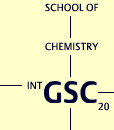 |


![]()
Name: Julia Bornhorst
Diploma / M.Sc degree: Westfälische Wilhelms-Universität Münster, Germany
(November 2008)
PhD Project: Neurotoxicity of Manganese
Homepage: http://www.uni-muenster.de/Chemie.lc/forschen/schwerdtle/arbeitsgruppe/index.html
Abstract of Research Project
Manganese (Mn) is one of the most abundant metals in the earth`s crust; it is naturally present in rocks, water, soil and food. As an essential trace element it is involved in numerous metabolic pathways, for example as cofactor of many enzymes among others the antioxidative enzyme superoxiddismutase. In industrial countries the typical daily intake of adults (1.6 – 2.3 mg/day) is higher as compared to the estimated daily requirement and therefore in case of healthy individuals a Mn supplementation is not necessary. This is special importance since it is known that chronic Mn overexposure can result in syndromes similar to the idioparthic Parkinson`s disease; the neurological phenotype is known as manganism. Mn overexposure has been shown to result from inhalative occupational Mn exposure, but might also be possible to occur after ingestion of supplemented food samples or Mn containing food supplements. Interestingly the mechanism behind Mn-induced neurotoxicity is still unknown and different modes of action, among others oxidative stress and an accumulation of the metal in the brain, are discussed. Searching for mechanistic hints, in our in vitro studies we compare cytotoxic (cell number, membrane integrity, NADH level, colony forming ability) and genotoxic (DNA damage, micronuclei, HPRT) effects of physiologically relevant Mn species in various human cells in culture. Additional investigations including studies mimicking the blood-brain-barrier, structural studies with DNA repair proteins and signaling-experiments will hopefully identify molecular targets for and mechanisms behind manganese-induced neurotoxicity in humans.
Publications
J. Bornhorst, C. A. Wehe, S. Hüwel, U. Karst, H.-J. Galla, t. Schwerdtle
Impact of Manganse on and transfer across the blood-brain and blood-CSF Barrier in vitro
J. Biol. Chem. 287(21) (2012), 17140-51.
J. Bornhorst, F. Ebert, H. Lohren, H.-U. Humpf, U. Karst, T. Schwerdtle
Effects of manganese and arsenic species on the level of energy related nucleotides in human cells
Metallomics 4(3) (2012), 297-306.
C. A. Wehe, J. Bornhorst, M. Holtkamp, M. Sperling, H.-J. Galla, T. Schwerdtle, U. Karst
Fast and low sample consuming quantification of manganese in cell nutrient solutions by flow injection ICP-QMS
Metallomics. 3(12) (2011), 1291-1296.
K. Isfort, F. Ebert, J. Bornhorst, S. Sargin, R. Kardakaris, M. Pasparakis, M. Bähler, T. Schwerdtle, A. Schwab, P. J. Hanley
Real-time Imaging Reveals That P2Y2 and P2Y12 Receptor Agonists Are Not Chemoattractants and Macrophage Chemotaxis to Complement C5a Is Phosphatidylinositol 3-Kinase (PI3K)- and p38 Mitogen-activated Protein Kinase (MAPK)-indepedent
J. Biol. Chem. 286(52) (2011), 44776-44787.
Julia Bornhorst
eMail: Julia Bornhorst